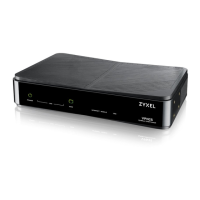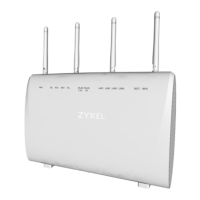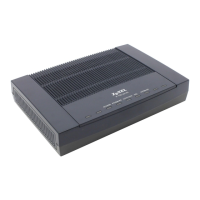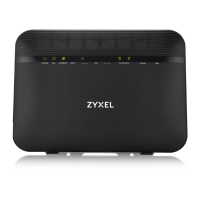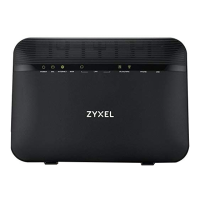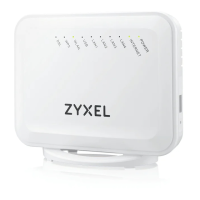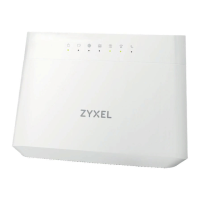Chapter 35 DHCP
VES1724-56 User’s Guide
322
The following table describes the labels in this screen.
Table 150 DHCPv6 LDRA
LABEL DESCRIPTION
VLAN ID Enter a VLAN ID (between 1 and 4094) to be served with DHCPv6 LDRA. Make sure the
VLAN ID exists before you configure a DHCPv6 LDRA entry.
LDRA Lightweight DHCPv6 Relay Agent (LDRA) adds information to client DHCPv6 requests
before forwarding them to the DHCPv6 server. Select Enable to add information such as
this system’s host name and subscriber port from which the request was received. Clear
Enable to have the system forward DHCPv6 requests for this VLAN without adding
information.
Option18
(Interface ID)
Option 18 is required for LDRA. Select Enable and specify the Interface ID information to
add to the client DHCPv6 requests forwarded for this VLAN to identify the interface which
received the client message. For example, use “%hname%%pid%svlan” to add this
system’s host name, subscriber port ID, and SVLAN ID from which the request was
received.
Option37
(Remote ID)
The required option 18 can only add up to 127 characters of information about the
DHCPv6 requests forwarded for this VLAN. Use option 37 if you need to add extra
information beyond what you configure for option 18.
Option 37 (Remote ID Info) is the DHCPv6 equivalent for the Dynamic Host Configuration
Protocol for IPv4 (DHCPv4) Relay Agent Option's Remote-ID suboption.
Select Enable and specify additional information to add to the client DHCPv6 requests
forwarded for this VLAN. For example, use “%hname%mac” to add this system’s host
name and the MAC address of the client that sent the request.
Port This field displays the index number of a port on the Switch. This field also displays the
port bonding group ID if the port has joined a group, for example, 22-B01 where B01 is
port 22’s group ID. A star (*) displays next to the group ID if the port is the main port in
that group.
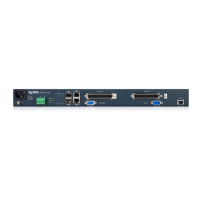
